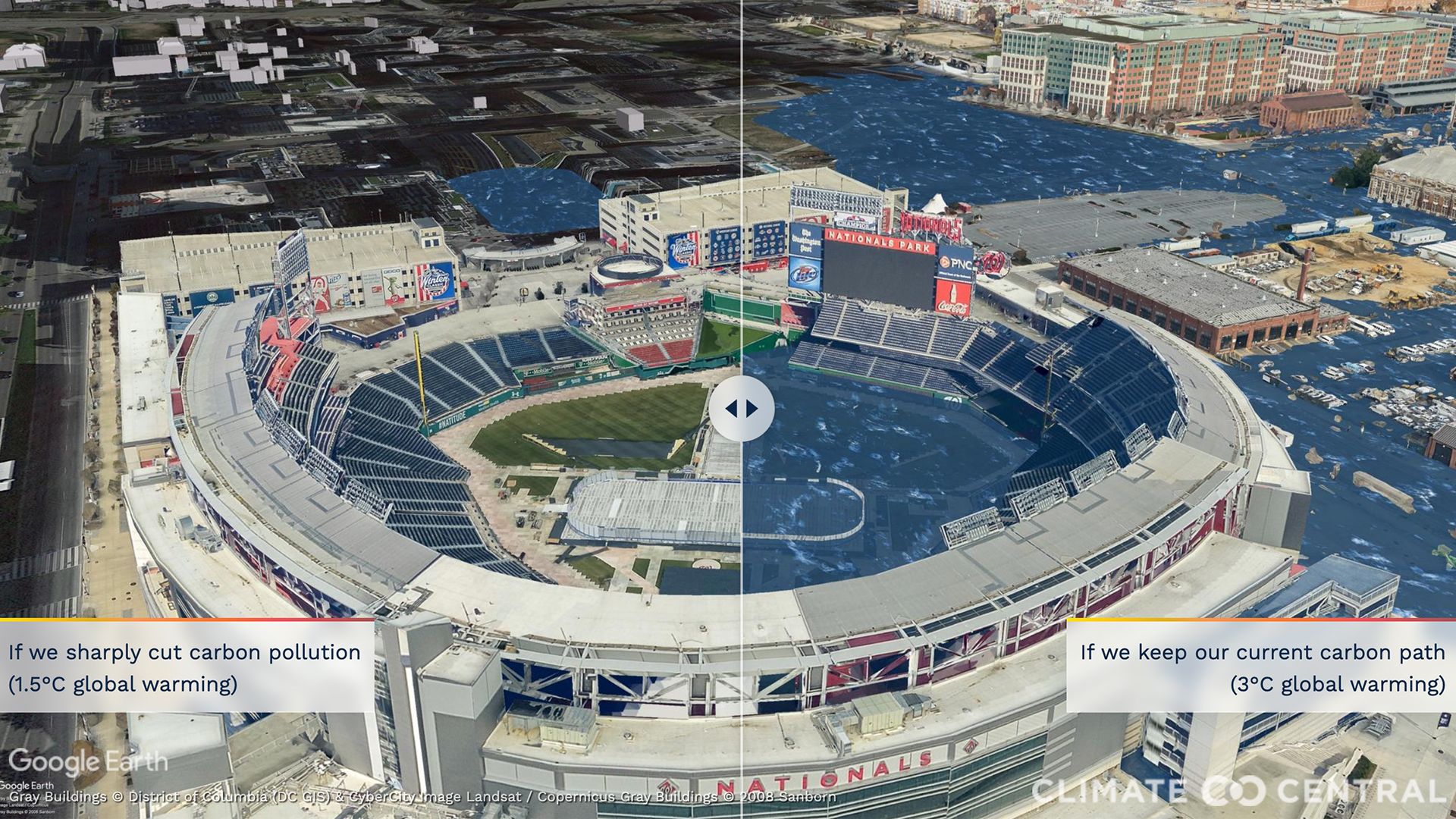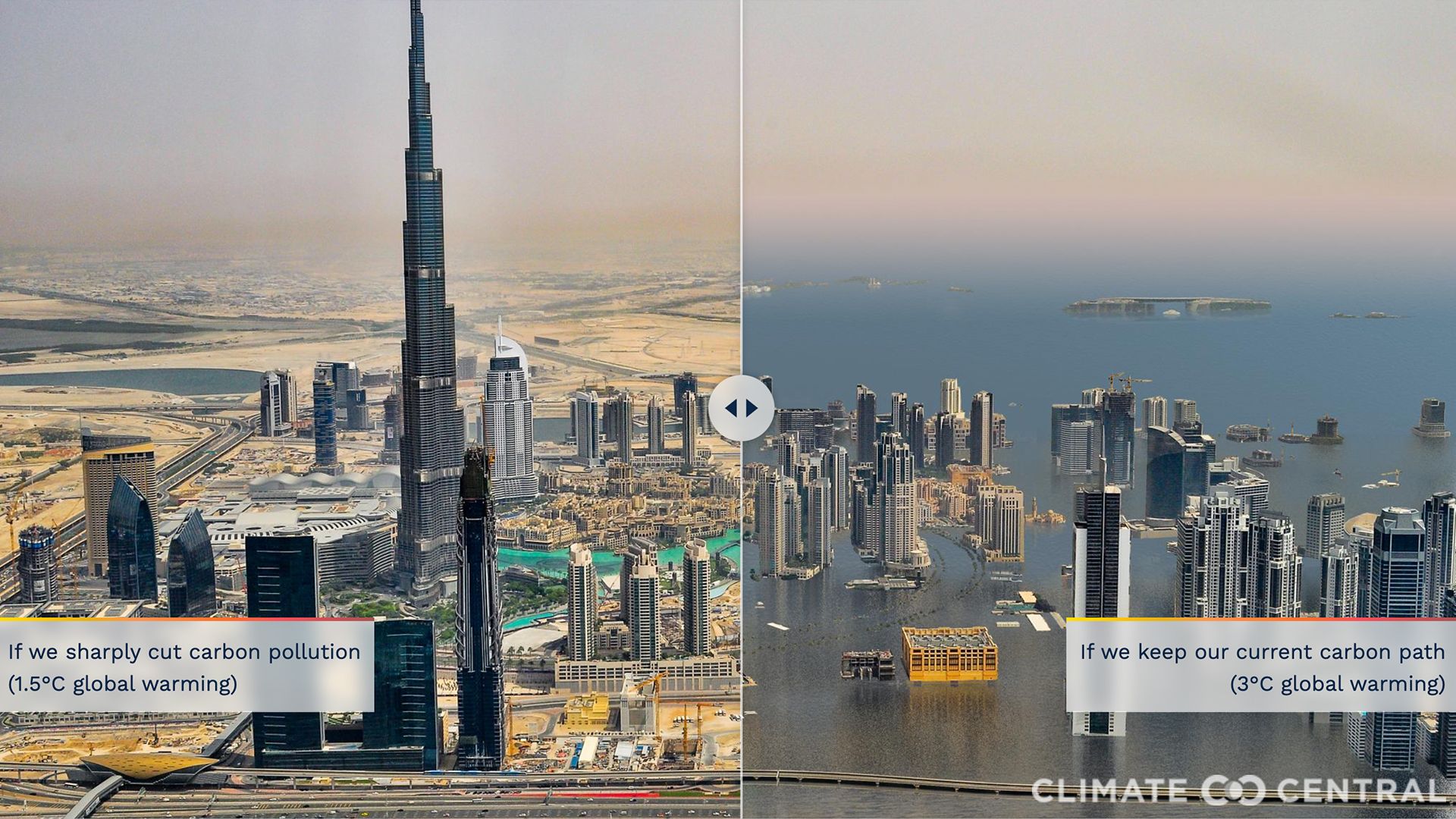Future of megacities "hang in the balance" as diplomats prepare for COP26

- Andrew Freedman, author ofAxios Generate

Still images from an interactive slider comparing Washington Nationals Stadium's future with steep emissions cuts with our current carbon path. Courtesy: Climate Central
Nations’ follow through — or lack thereof — on pledges made at the looming UN climate summit will help determine the long-term fate of tens of millions of people living in coastal megacities threatened by rising seas.
Why it matters: The delayed response of the climate system, with seas that warm and expand slowly and ice sheets that can take centuries to reach equilibrium — long after air temperatures have leveled off, means the stakes of COP26, and government decisions in coming years, are extraordinarily high.
- Cumulative carbon emissions have already committed the world to about 6.2 feet of sea level rise over the next few centuries, even if emissions suddenly ceased today.
Driving the news: The new study, published Monday in Environmental Research Letters and visualized in startlingly detailed maps and simulations by Climate Central, a climate science and journalism organization, shows that of all the countries, China may have the most to gain from limiting emissions.
- China is the world's top current emitter of carbon dioxide, and a major consumer of coal, the most carbon-intensive fuel.
- According to the peer reviewed research, about 50 million people in China currently live on land threatened by multi-century sea level rise if warming reaches or exceeds 3°C (5.4°F) by 2100.
- The study shows that if the world warms by about 3°C, as it's currently on course to do based on the trajectory of emissions, sea levels would eventually imperil about 15% of the current global population, or about one billion people.
- If, on the other hand, the world were to meet the temperature targets laid out by the Paris Climate Agreement, and hold warming to well below 2°C (3.6°F) relative to preindustrial levels, that number could be cut in half, the study found.

Between the lines: The greatest vulnerability to sea level rise during this century and beyond is in Asia, where 8 out of the top 10 most at-risk large nations are located.
- In fact, if the world were to warm by 4°C (7.2°F) relative to preindustrial levels through 2100, then 50 major cities, mainly in Asia, would "need to defend against globally unprecedented levels of exposure," the study warns.
- China, India, Vietnam, and Indonesia are all among the top 5 countries most vulnerable to sea level rise between now and 200 to 2,000 years from now, the study found.
- These are the same countries that have been building large numbers of new coal power plants, the study states. In Asia, the study says, "Megacity futures hang in the balance."
Threat level: The study notes two key caveats, neither of which offers much comfort.
- First, the study's sea level rise projections do not include the possibility of a runaway breakup of the West Antarctic Ice Sheet, which other research has shown is not only possible but may be quite plausible at this point.
- Secondly, it notes that the countries that would have the most resources to mount unprecedented coastal defenses against rising tides are not the most at risk.
- Countries and may face stark choices between pursuing dramatic feats of engineering and abandoning cities entirely.
The bottom line: The seas will continue rising long after emissions are cut. How high they go depends on our near term actions.